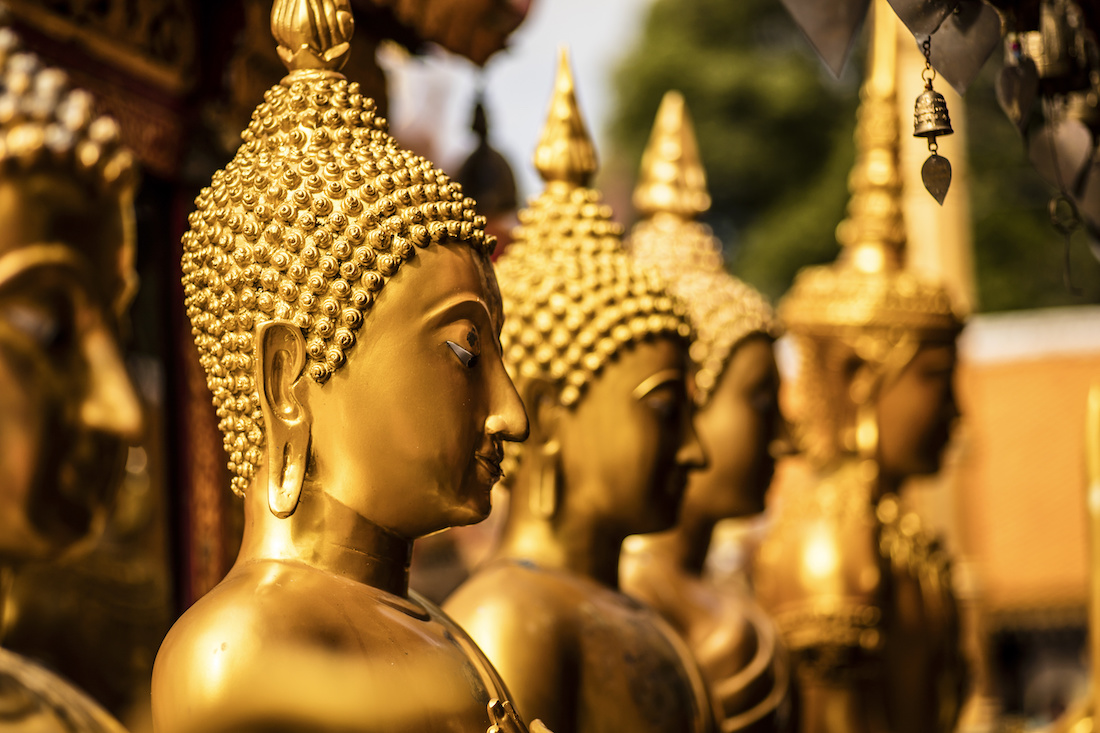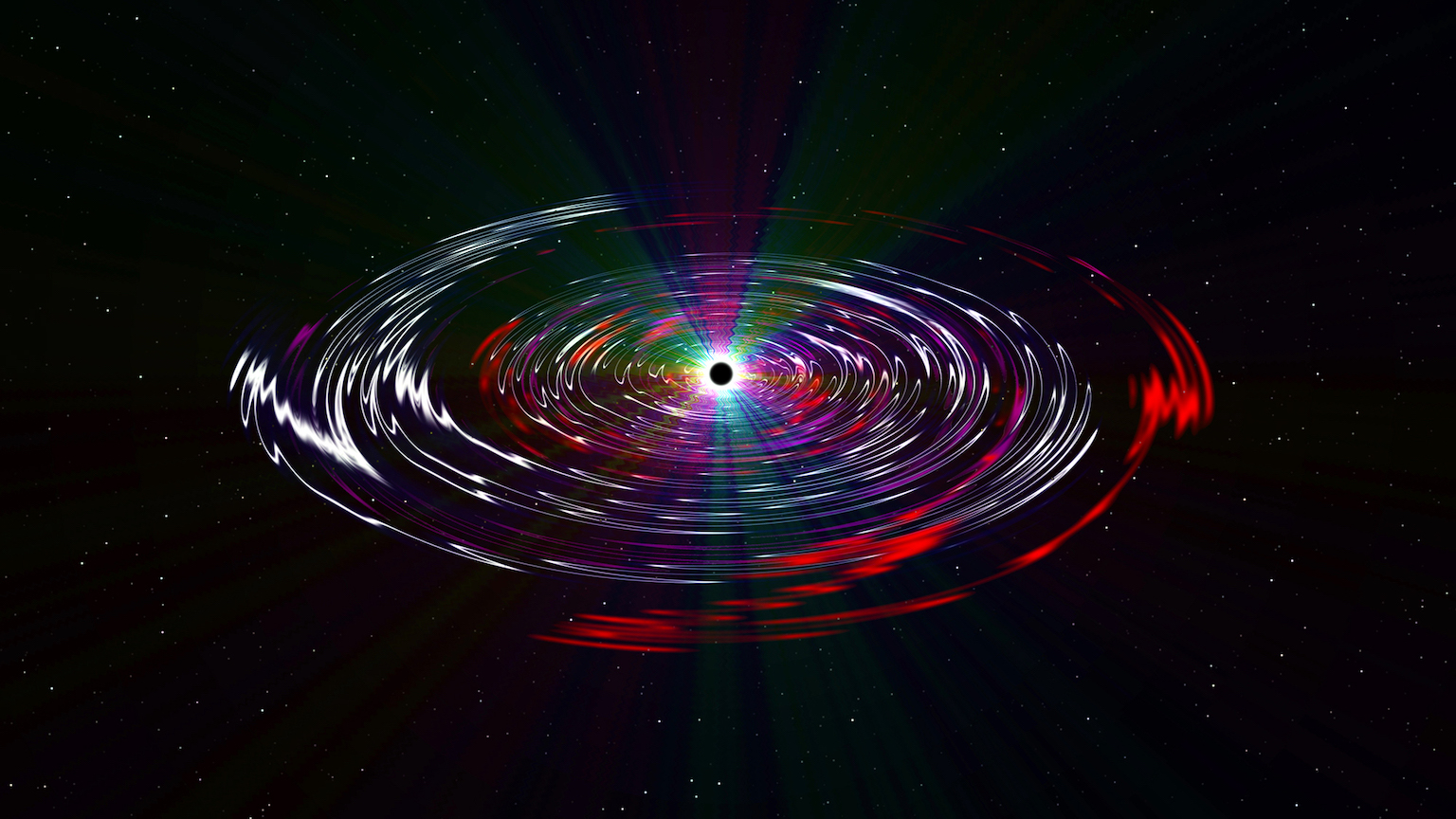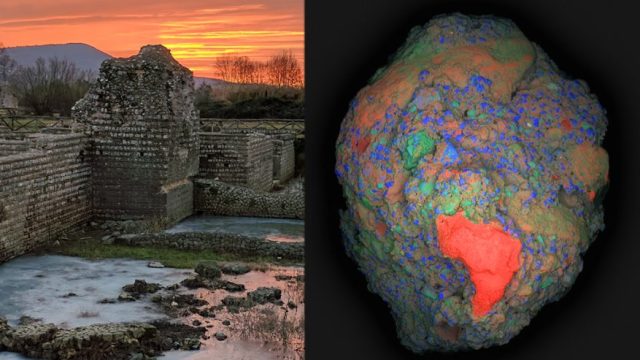Trimurti: Meet the “Holy Trinity” of Hinduism

- The Hindu trinity is also known as the Trimūrti, Sanskrit for “three forms,” and it includes Brahma, Vishnu, and Shiva.
- The deities are responsible for guiding the cycles of creation and destruction in the Universe.
- Hinduism provides a multitudinous path to enlightenment, placing emphasis on the journey itself rather than preferring any individual path.
Hinduism is recognized as the world’s oldest living religion, with ancient scriptures dating back more than four thousand years. There is no single set of beliefs and practices that can be considered “correct” or “true” in Hinduism. Its major concern is that people make the journey in the first place, as the cycle of life provides the necessary lessons.
There are three principal deities to guide people through that cycle. The Hindu trinity is also known as the Trimūrti, Sanskrit for “three forms,” and it includes Brahma, Vishnu, and Shiva. Since these three gods are responsible for the creation, preservation, and destruction of the Universe, respectively, exploring Hinduism through the Trimūrti can be a key to understanding what makes Hinduism so enduring.
Brahma is responsible for bringing the Universe into existence, Vishnu maintains its balance, and Shiva is called on to end the cycle of creation and destruction. Each of these gods represents a different aspect of the divine, Brahman. Together, they form the foundation of Hindu belief and practice as they guide the Universe through its cycles.
Setting us on the path
Brahma, the god of creation, is considered to be the source of all knowledge and wisdom. He is depicted as a bearded man. He has red or golden skin, and four faces to represent the four Vedas. The Vedas — Sanskrit for “knowledge” — contain Hinduism’s teachings. They are the Rigveda, Yajurveda, Samaveda, and Atharvaveda.
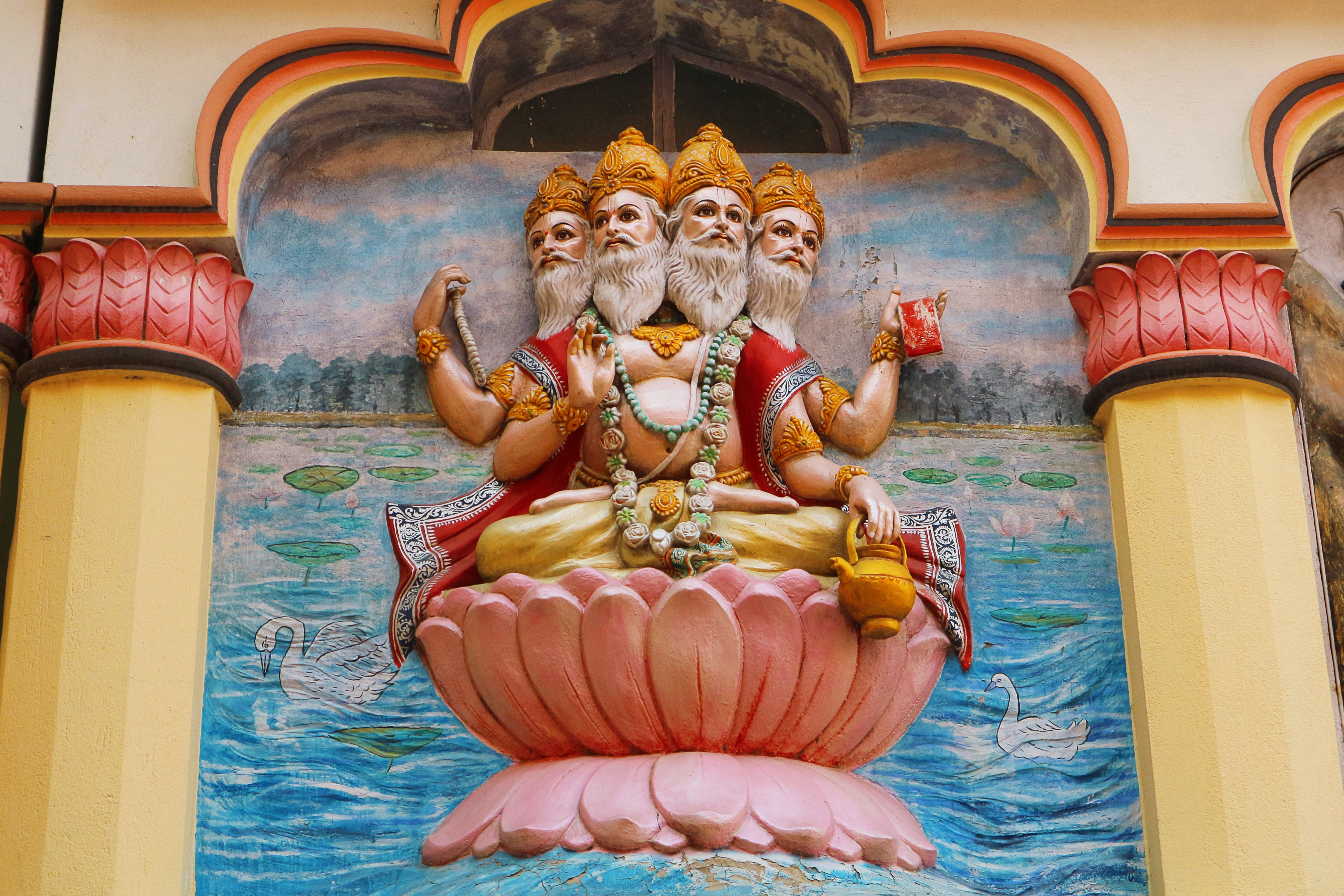
The Vedic practices derived from these texts are simply a set of guidelines to help people lead a Dharmic, or good, life. Indeed, while Hinduism today is the world’s third-largest religion, it was not founded as a religious system.
Dharma is the path of right conduct, righteous living, and moral law. Whether or not a person fulfills their moral duties impacts a person’s karma, which is the results of a person’s behavior and actions. Karma accumulates across all of their reincarnated lives. Following dharma generates good karma, as virtue purifies the mind and helps to usher one toward moksha, Sanskrit for “release.” Moksha, the ultimate goal of Hinduism’s spiritual path, is a state of enlightenment in which one overcomes ignorance and desire through realizing one’s true nature. This allows a soul to escape from the cycle of reincarnation and unite with Brahman, the Ultimate Reality.
Through Brahma, we learn that Hinduism is characterized by a spiritual journey for wisdom and self-knowledge — that it values the individual, emphasizing the need for self-awareness. The cultivation of wisdom and the evolution of the individual mind and personality are more important in the Hindu value system than the faith or religion one adheres to. This makes Hinduism characteristically more secular than other religions, as it attaches prime importance to human rather than divine or supernatural matters. It is also more humanist, as it stresses the potential value and goodness of human beings.
Protecting the Universe
While Brahma is not worshipped as a main deity, and there is no sect that exclusively worships Brahma, there is a sect (Vaishnavism) dedicated to Vishnu, the god of preservation. Vishnu is the protector of the Universe. He is depicted with a human body, often with blue skin and four arms. He returns to the Earth in troubled times, in the form of human and animal avatars, to restore the balance of good and evil.

According to Hindu scripture, Vishnu has incarnated nine times, but Hindus believe there will be a tenth time that he incarnates as Kalki. The image of Kalki is very similar to that of the Heavenly Warrior from the Apocalypse (Revelation 19:11-21): He will arrive on a white horse carrying a sword, doling out justice and punishment.
But Hinduism does not recognize a singular event that will bring about the end of all things. Instead, endings culminate one cycle of creation and destruction, and they begin the next. In the story of Kalki, a preserver becomes a destroyer when faced with deterioration, as he must help to usher in a new era.
First, though, Vishnu maintains the Universe during each cycle. As the preserver and protector, Vishnu is often invoked by devotees who seek protection and guidance on their spiritual journey.
Hinduism is a diverse religion with many different sects, traditions, and practices. Just as Vishnu visited the Earth multiple times to offer aid, Hinduism offers many different pathways to achieve enlightenment, with three practices outlined in the Bhagavad Gita: jnana (knowledge), bhakti (devotion), and karma (action). This pluralism is captured well in the Sanskrit hymn: ekaṃ sad viprā bahudhā vadanti, or “Truth is one, the sages speak of it by many names” (Ṛig Veda 1/164/46).
Through Vishnu’s incarnations and other forms, Brahman appears in myriad manifestations as gods, goddesses, people, animals, plants, stars, and planets. Hindus are free to worship any of these Ishta Devata (Sanskrit for “preferred deity”), making Hinduism more heterogenous than other religions.
A time to destroy
The third God of the Hindu trinity is Shiva, the god of destruction. He represents the final step in a cycle, and Shaivism is the sect that worships him as the primary god.
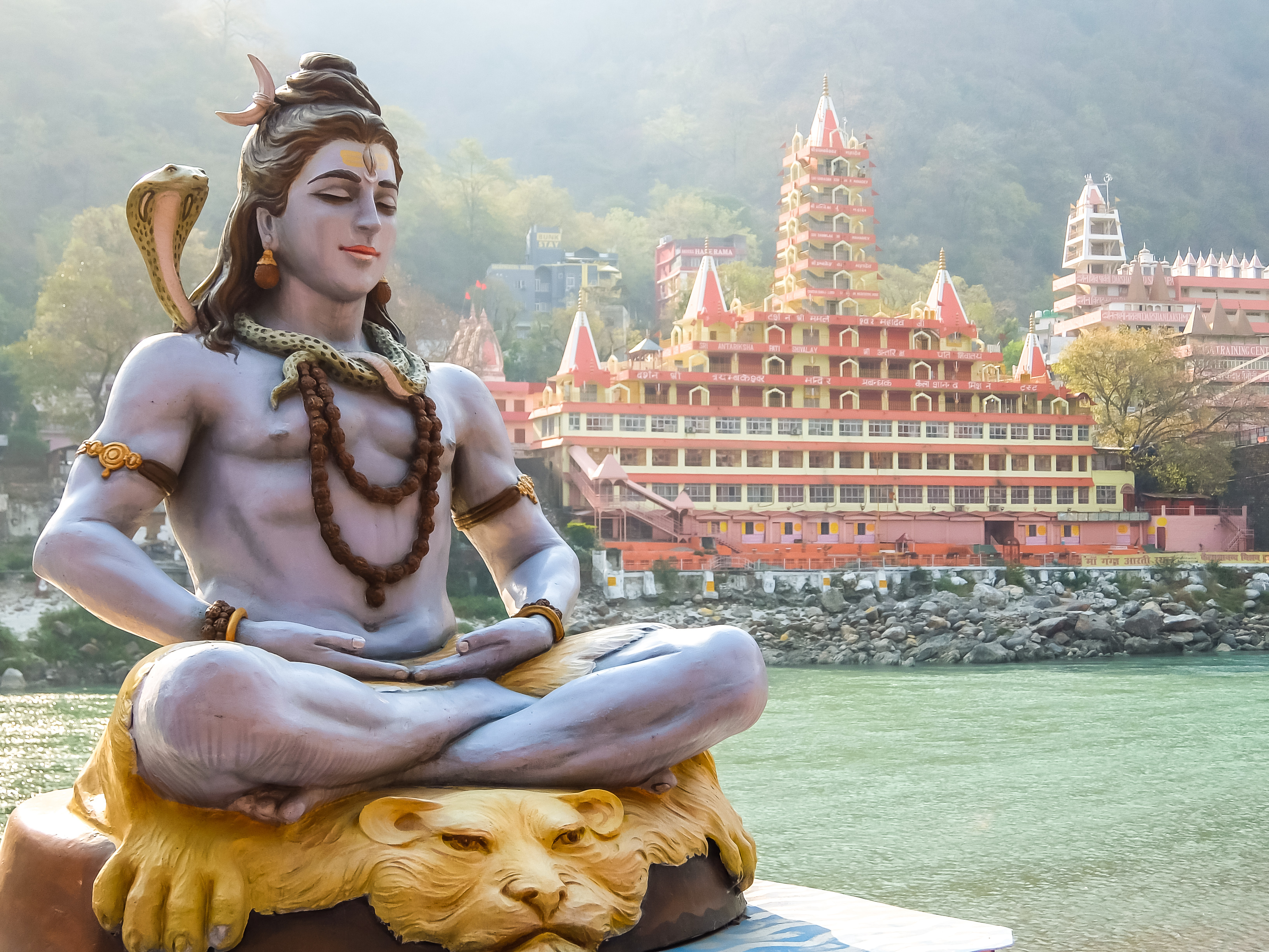
Shiva is often depicted with a serpent (Vasuki) around his neck, evidence that he has no fear. A crescent moon rests atop his head, representing spiritual wisdom. He has a third eye on his forehead, a reminder that he possesses supernatural insight. The third eye opens when Shiva intends to destroy that which is evil, expired, or outdated.
Shiva may seem menacing at first impression, because destruction is an uncomfortable concept. But while Shiva’s role is to destroy, this is for the purpose of constructive transformation. Since destruction begets creation, it is a necessary part of personal evolution.
Shiva holds a trident, with the three spikes representing the three key human qualities, or gunas, that Krishna introduces in the Bhagavad Gita: sattva (goodness), rajas (passion), and tamas (ignorance). Every human possesses all these in varying degrees, but when one dominant quality suppresses the others, it is apparent in one’s behavior. A person’s dominant quality impacts their karma and will influence the type of life they are born into in their next incarnation.
Killing the ego
A distinctive aspect of Hinduism is its recognition of the divine feminine in the trinity — each god has a goddess consort. Brahma’s consort is Saraswati, the goddess of knowledge and learning; Vishnu’s is Lakshmi, the goddess of wealth and prosperity; and Shiva’s consort is Parvati, the goddess of fertility, love, and devotion.
This triad of divine goddesses forms the Tridevi. The goddess Shakti is regarded as comprising all the Tridevi, meaning Shakti is a Mahadevi, Sanskrit for “great goddess.”
Shakti means “power, energy, or force,” and in Hindu theology, this is the active dimension of the godhead. Shaktism is also one of the major Hindu denominations, on par with Vaishnavism and Shaivism. Each of the Trimūrti’s goddess consorts is imbued with attributes to complement the functions of the gods.
One of Shakti’s forms is Kali, the goddess of death and destruction. She is usually depicted partially naked, with a long dangling tongue, a skirt of human arms, and a necklace of decapitated heads. Among her many hands she holds a sword and a severed head. The sword signifies divine knowledge, while the human head signifies the human ego, which must be slain by divine knowledge to attain moksha. Some Hindu sects worship Kali as Brahman. Here, she is seen as the one who grants moksha.
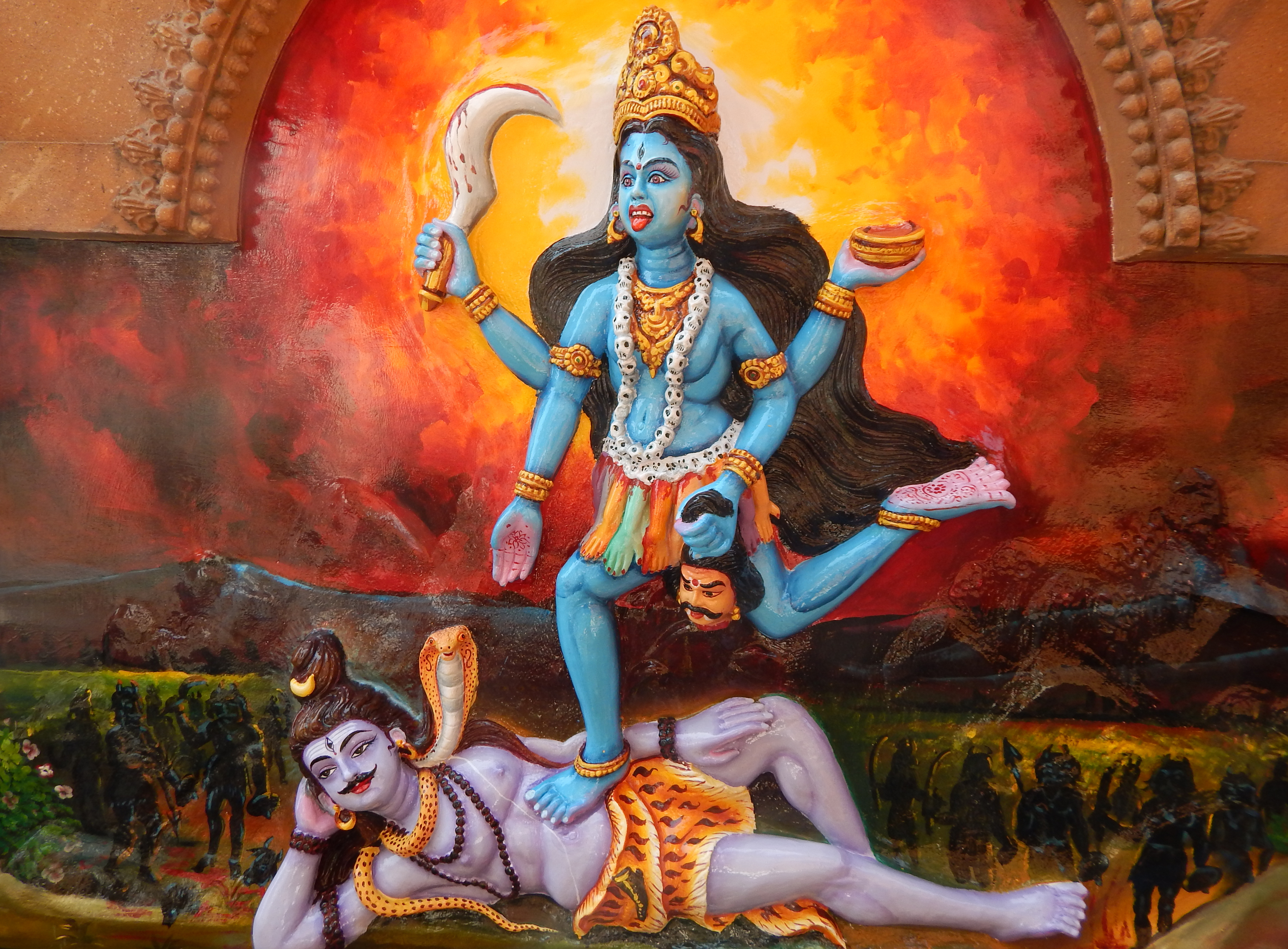
Although she is not Shiva’s consort, Kali is often depicted with Shiva in iconography, as they overlap in the arenas of destruction and opposition to evil. In some traditions, the two are seen as aspects of the same divine reality, with Shiva representing the destructive aspect of the divine and Kali representing the creative. An iconic image in Hindu art and mythology is that of Kali standing on Shiva’s chest. Kali is often believed to represent Shiva’s unbridled passion, and the image of Kali standing over Shiva symbolizes the supremacy of Nature over man, or the triumph of the divine feminine energy, the creative force, over divine masculine energy. Shiva represents the destructive forces of the Universe, while Kali represents creation and regeneration. By standing on top of Shiva, Kali is in control, and she is able to use these regenerative forces to benefit the world.
Endless transformation
Shiva is also often depicted as meditative and serene, his eyes closed in deep contemplation, while Kali is depicted as active, tumultuous, and powerful. Since Shiva represents transformation and the end of a cycle, this shows how the Hindu process of self-improvement is energetic and bold. Shiva’s quiet reflection should lead to insight, that insight should lead to Kali’s bold action, and through this process, we can transform.
Through the triumvirate nature of the Hindu godhead, we can understand the core tenets of Hinduism. Three main deities carry forward the cycles of creation, preservation, destruction, and recreation. They show that Hinduism is a spiritual progression toward wisdom, self-knowledge, and enlightenment.
Hinduism provides a multitudinous path to enlightenment, placing emphasis on the journey itself rather than preferring any individual path. It holds us responsible for our own self-improvement. It also teaches that insight must lead to action, and that destruction is necessary for creation.
